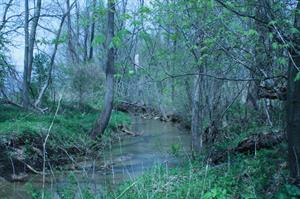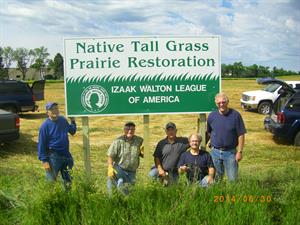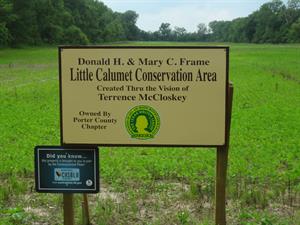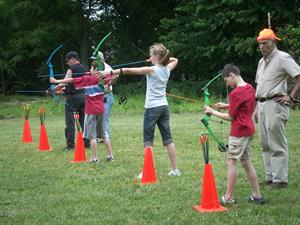 This article is part of the League’s long-running “10 Ways To Help Your Chapter” series of articles offering tips, tricks, and ideas to grow your chapter and engage in conservation and outdoor recreation. In this issue, we look at the “mysteries” of obtaining grant funding for chapter activities and projects.
This article is part of the League’s long-running “10 Ways To Help Your Chapter” series of articles offering tips, tricks, and ideas to grow your chapter and engage in conservation and outdoor recreation. In this issue, we look at the “mysteries” of obtaining grant funding for chapter activities and projects.
1. GRANTS 101
One of the television networks put out a series of public service announcements focused on the concept, “The more you know.…” Nothing could be more true when navigating the waters of finding money for your chapter. So let’s start at the very beginning: Just what is a grant?
A grant is not a loan. Your chapter does not need to repay a grant. Most grants fund a specific project — one that is mutually beneficial to you and the funder. Your chapter receives much-needed dollars for a project and the funder receives a benefit indirectly from the work you do.
2. WHO, WHAT, HOW
Every League chapter, large or small, has the potential to receive grant funds. One of the best places to start looking for grant opportunities is in your community. You won’t find a more appreciative and receptive audience! Local groups or companies with offices in your area have a vested interest in being part of community affairs. Programs to engage youth in outdoor recreation or monitor local water quality are just a few examples of activities your chapter might offer to improve the local community — and attract local funders.
Most funders make grants only to nonprofit or tax-exempt groups. If your chapter has its own 501(c)(3) tax exemption or is covered under the national organization’s tax-exemption umbrella, that would qualify your chapter for such grants.
3. THE NEXT BIG IDEA
Does your chapter already have a project in mind? If not, developing a project idea is your first step. To generate new ideas, you can:
- Include “project ideas” as an agenda item for an upcoming chapter meeting.
- Set up a suggestion box where members can drop off ideas.
- Gather input from chapter members by e-mail or a survey. (This is also a great way to engage members in planning for the chapter’s future.)
Brainstorming means there are no bad ideas! Once suggestions are gathered, you are ready to review the possibilities and narrow down your choices. This step should include considering the viability of each option. Is it a “fundable” idea? Grant makers are looking for projects that “serve a greater good,” and you want your idea to fit that model. Your chapter may well need to buy a new lawnmower or fix the plumbing at the chapter house, but it is unlikely you will get a grant for this type of work. Examples of projects that might receive funding include building a wheelchair- accessible fishing dock, installing a rain garden, or creating a youth archery program.
4. GRANT SOURCES & RESEARCH TOOLS
There are no shortcuts to a successful grant. It takes time, planning, research — and passion for your vision! If you are excited, you can get a funder excited.
 A good place to start researching funding opportunities is with the Izaak Walton League of America Endowment, which funds conservation and outdoor recreation projects for IWLA chapters and divisions. Visit http://iwla-endowment.org for more information about the Endowment.
A good place to start researching funding opportunities is with the Izaak Walton League of America Endowment, which funds conservation and outdoor recreation projects for IWLA chapters and divisions. Visit http://iwla-endowment.org for more information about the Endowment.
To find funding close to home, check with local community foundations about the kinds of projects they fund. Ask chapter members if they have connections to particular funders you think might be a match for your project. Search online using phrases such as “funders in [your state/your city].”
Check your local library for information on funders and best practices in proposal writing. Ask the reference department staff to point you in the right direction. The Foundation Directory (available in print and online) contains information on funder fields of interest and contact information; examples of projects that each funder has supported; and sample proposal letters and grant applications. Use the topic index to locate your best leads.
There’s a lot of information out there. Visit the League’s Web site for sample forms and worksheets to help you keep track of all of it.
5. TAKE NOTE
When evaluating a potential funder, capture as much information as you can, including:
- Contact information (for questions and where applications should be sent)
- Funder’s field of interest (look for interests similar to your proposed project, such as a geographic range or focus areas such as youth engagement)
- Deadlines for proposal submissions
The grant process can be different for different funders. It helps to become familiar with key terminology. For example, LOI stands for a “letter of inquiry,” which means the funder wants requests in letter format first rather than a full proposal. PSO stands for “pre-selected organizations only,” which means the funder will not accept proposals it has not asked for.
If a potential funder is local, call to request a meeting before you write your formal proposal. This can help you write a proposal that targets the key interests of the funder. Bring supporting documents and information about your project. If a meeting is not feasible, putting the request in writing — whether it’s a letter of inquiry or a proposal — is the next step.
6. THE WRITE WAY
 Before you start writing a proposal, be sure to review the funder’s guidelines. Many funders have specific requirements or forms that must be used. If something in the guidelines is unclear, it’s okay to ask questions about it. (Better to ask questions up front than to not be selected for funding because you did not submit exactly what was requested.)
Before you start writing a proposal, be sure to review the funder’s guidelines. Many funders have specific requirements or forms that must be used. If something in the guidelines is unclear, it’s okay to ask questions about it. (Better to ask questions up front than to not be selected for funding because you did not submit exactly what was requested.)
Most funders require some basic information, so get ahead of the game and have these documents lined up in advance: a budget for the project, your chapter’s 990 tax return, your IRS 501(c)(3) exemption letter, your chapter EIN, a list of your chapter board of directors, and other information about the chapter such as newsletters or press clippings.
7. PUTTING IT TOGETHER
A successful proposal has several key components. Our “Elements of a Proposal” checklist offers tips on each piece. The most critical items include:
- IWLA/Chapter Background: Put together some “stock” paragraphs that you can use with all your proposals. The goal is to tell the funder something about the League and your chapter in particular. Include details such as the League’s mission statement, when your chapter was founded, how many members you have, what kind of conservation/community service programs the chapter engages in, etc. You want the funder to feel good about the work your chapter does!
- Statement of Need: What is the problem that your project will address? For instance, if you want to install a rain garden, you might discuss water quality problems and how a rain garden will capture runoff and filter out pollutants. If you are looking for funds to set up a youth archery program, talk about the disconnect between children and the outdoors and how time spent outdoors can improve children’s health and concentration in school.
- Budget: The funder will want to see specifically how their funds will be used. If you need to purchase supplies, such as native plants or archery equipment, get estimates for these costs up front and include them in the project budget. If you need to hire outside contractors with large equipment or a professional consultant to help with the project, these expenses also belong in your budget. You can find a sample budget at www.iwla.org/chaptertools/grants.
8. THE WAITING GAME
What do the funder’s guidelines say regarding notification? When will you find out if you have been successful? Does the funder discuss grant applications monthly or just once a year?
Some funders accept calls to ask about the status of a grant application, while other funders are very clear that calls are not encouraged. If you do not receive the grant and you are able to contact the funder, ask why your proposal was rejected. Such constructive feedback will help you improve proposals for the next funder (and increase your odds of getting funding). Sometimes there just is not enough money to go around and you may be able to resubmit your request during the next funding cycle. In the meantime, work to connect the funder with your chapter. Put them on your newsletter mailing list, for example.
9. IT’S NOT OVER UNTIL….
 You received a grant and are ready to celebrate! Hold on, though — you are not finished with the grant process yet. First, send a thank you letter to the funder. Then carefully review the grant agreement, which outlines the terms under which you are receiving the money. You will have to agree to certain conditions set forth by the funder, such as submitting grant reports or a detailed description of how grant funds were spent. These terms should be spelled out in the grant agreement.
You received a grant and are ready to celebrate! Hold on, though — you are not finished with the grant process yet. First, send a thank you letter to the funder. Then carefully review the grant agreement, which outlines the terms under which you are receiving the money. You will have to agree to certain conditions set forth by the funder, such as submitting grant reports or a detailed description of how grant funds were spent. These terms should be spelled out in the grant agreement.
Follow-up is key to your relationship with the funder. You want the funder to feel good about giving money to your project and look favorably upon future applications you might submit. Sloppy follow-through on completing your project sends a poor message. Don’t let that happen to you! Set up a calendar to track reporting requirements and project results. Consider inviting the funder to see the completed project or outcome of the work; send pictures if the funder is unable to visit in-person.
Recognize the funder’s support on your Web site, in your chapter newsletter, and perhaps on a banner for a specific event the funder supported. However, if you funder wants to remain anonymous (this may happen with an individual funding a project), be sure to respect the funder’s wishes.
10. BROADCAST YOUR SUCCESS
Finally, be sure to toot your own horn! Contact local media outlets (newspaper, radio, television, blogs) to announce the new project and your funder. This will help get exposure for your chapter, gain public support for your efforts, and provide recognition for your funder. Even if your funder has asked to remain anonymous, you can still tout that your chapter received a grant for the project. Keep press clippings/links as supporting documentation about the project’s success. Need help finding press contacts? Your national staff can run a local press list for you. E-mail info@iwla.org for assistance.
Also, share your accomplishments with your state division (where applicable) and other chapters to let them know about the work you have accomplished. Sharing details about how you successfully navigated the grant process can encourage others to try to get funds for their own projects. Let the League’s national office know about your project and the results so League staff can help publicize it as well. This is an opportunity to grow local membership as well as further engage current members.